Last Updated on April 4, 2024
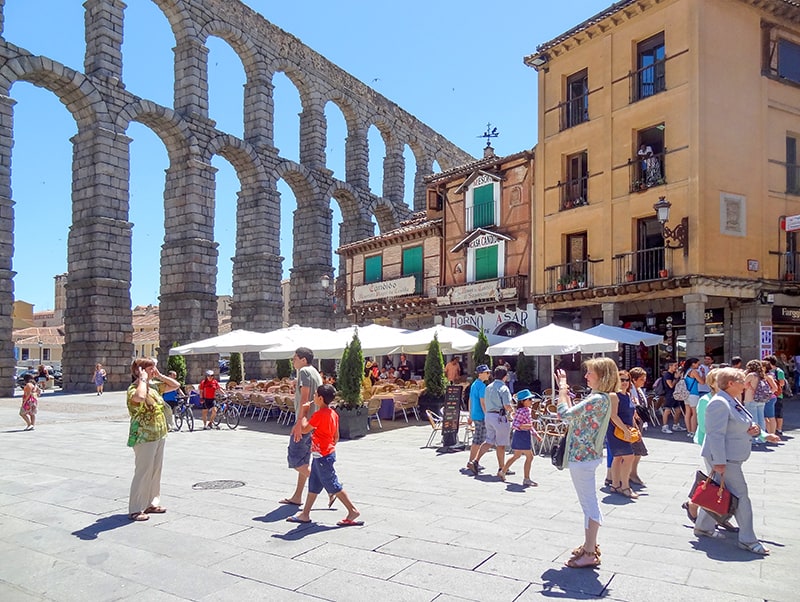
Estimated reading time: 8 minutes
By Jim Ferri
While in Madrid for a week, my wife and I decided to visit the historic and charming town of Segovia. It’s an excellent choice for a day trip from Madrid since it’s only about a 1½ hour’s drive from the capital. It’s also reachable by high-speed train in 27 minutes from Madrid’s Chamartin Station (€ 14 one way).
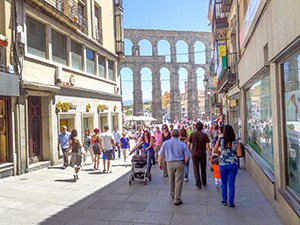
Surrounded by two rivers, Segovia has long been considered the most spectacularly sited city in the country. It was also a wealthy provincial capital and an important city for many years.
Isabella I was crowned Queen of Castile in the city’s main square. Spain’s King Philip II was married in Segovia’s Alcázar. And in the 18th century, King Carlos III founded the Royal School of Artillery in the same alcázar.
Today, however, Segovia is renown for two other things. The first is its Roman aqueduct, the largest and best preserved from the Roman Empire. Dating from the first century AD, it was in use, amazingly, until the late 19th century. It is an incredible feat of engineering, with two arches 2,400 feet long and rising to 95 feet in height. This UNESCO World Heritage site, built without mortar, brought water from the River Frio into the city.
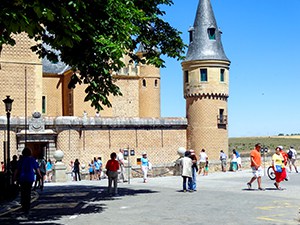
The second is Segovia’s 12th-century archetypal fairytale castle, or Alcázar, that sits above the city’s old town. Filled with period furniture, paintings, and armor, it’s renowned for its beautiful Throne Room, which is covered with ornate plasterwork and a Mudéjar ceiling.
However, of more interest today is that Segovia’s Alcázar, along with Neuschwanstein near the village of Fussen in Bavaria, is thought to have inspired Disney’s design of Cinderella’s castle in Disneyland.
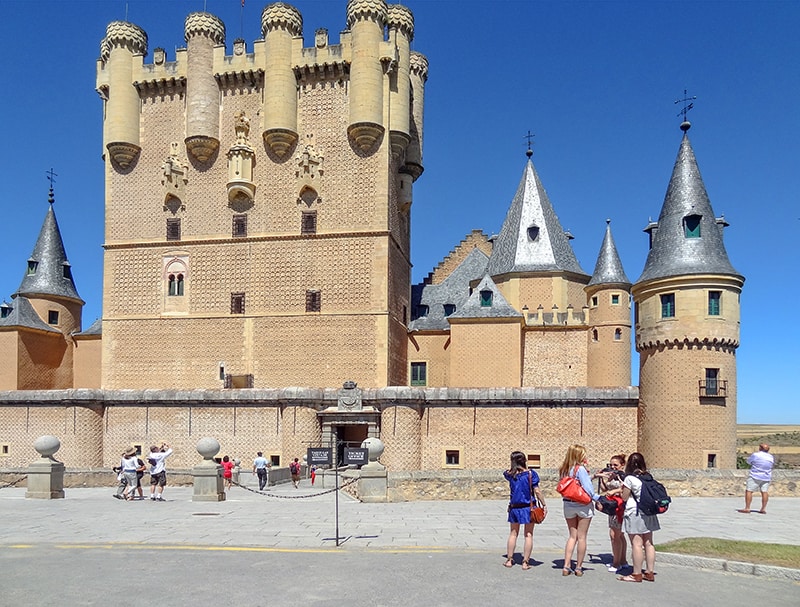
Segovia’s Alcázar
We drove to the provincial capital in a small 14-person bus, arriving about two hours before lunch.
When arrived we parked on a field below the castle where several tour buses were parked. We then walked up a zigzagging stone staircase on the hillside to the castle. Although we did not expect the climb, it was a beautiful walk through the woods with brightly colored poppies blooming along the way. At the top, a few of us set off to tour the castle, the others drawn into the surrounding neighborhood.
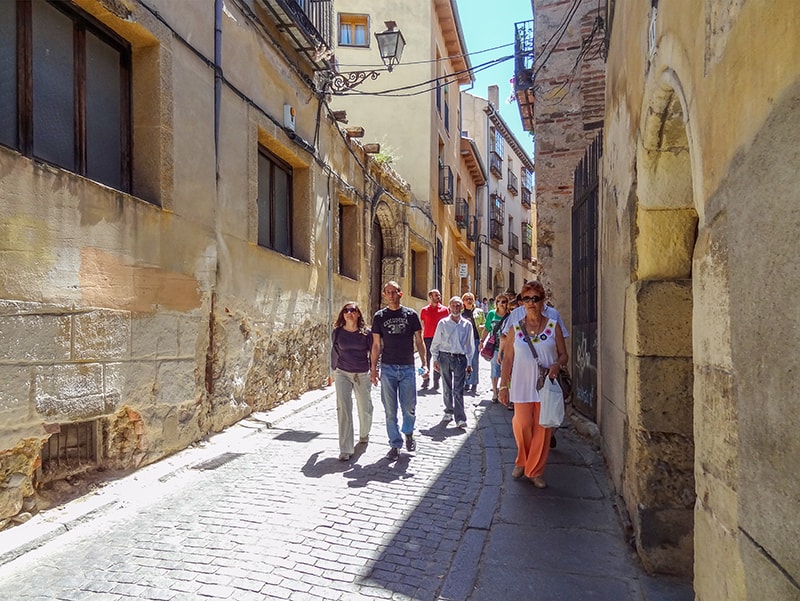
Soon, though, we were all leisurely walking down Calle de Daoiz, a pedestrian lane lined with little shops, galleries, and restaurants. As we meandered down the gently sloping street, all of us were drawn into little shops and galleries along the way.
Segovia’s old town is perfect for ambling along, poking into interesting shops to your heart’s content. Although we were there on a Saturday, I was surprised it wasn’t crowded with tourists.
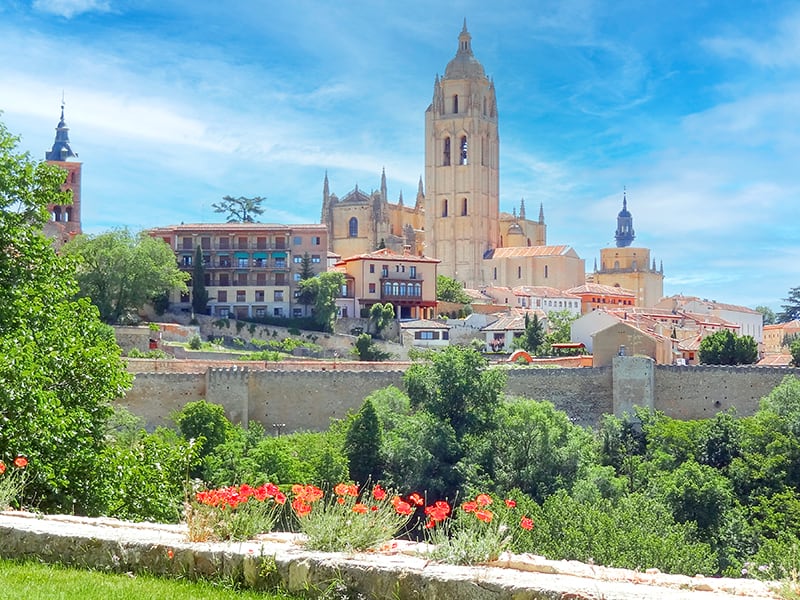
Segovia’s Museum and Cathedral
A block off the Calle is the Museo de Segovia, an archaeological museum with 15,000-year-old Stone Age carvings. Other artifacts in its collection that aren’t quite so ancient include Roman coins and fragments of old Arab houses.
The museum is also famous for its two stone Celtic bulls found beneath the nearby Calle Mayor. Experts believe they are divine protectors of the town’s citizens or, possibly, their livestock.
A five-minute walk from the museum is the Gothic-style Cathedral, which along with the Alcázar, dominates the town’s skyline. What you see today is from the mid-16th century, and replaces the old Cathedral destroyed in a 1520 revolt.
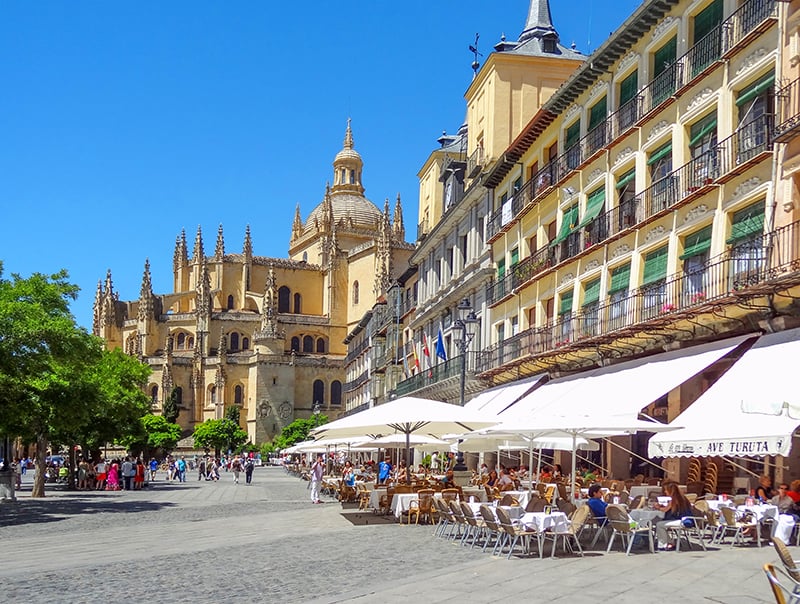
Segovia’s Wonderful Plaza Mayor
The Cathedral is beautiful, but what caught my attention was the Plaza Mayor adjacent to it. It was one of the most comfortable little squares I’d seen in any small city or town, for that matter.
A colonnade on one side of the square was lined with restaurants and outdoor cafés, and people were either finishing their late breakfast or gathering for lunch under canopies of umbrellas.
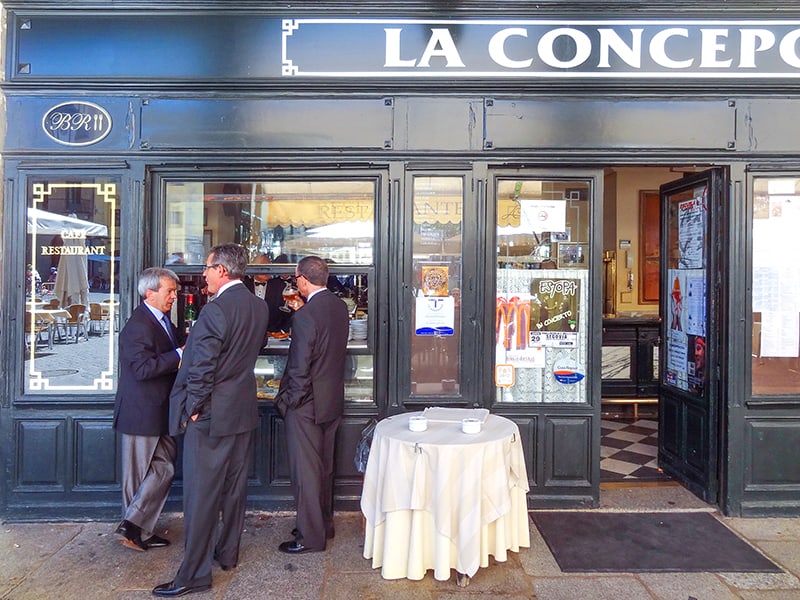
You couldn’t help but see one formally dressed family group, most likely coming from a christening in the Cathedral. The men stood by a restaurant entrance, talking while sipping their beers and coffees, while the women gathered around the tables beneath the umbrellas.
It was where you wanted to sit for hours, just sipping a beer or wine and watching the passing parade.
Walking along the colonnade, we passed La Oja Blanca, a restaurant with its name written above its door. A few minutes later, my wife Marjorie, who speaks Spanish, commented that she couldn’t understand the literal translation of the restaurant name since she was unfamiliar with the word “Oja,” so we decided to go back and ask.
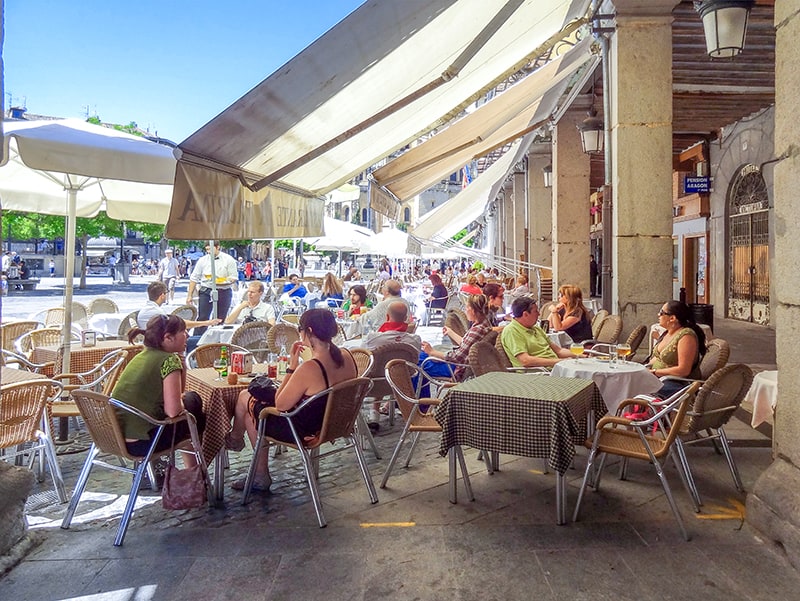
We asked several waiters and waitresses outside about the meaning, but with no luck. We then went inside and asked the woman behind the counter bar. She told us the name referred to a poem about a woman with a glass eye, written by a local poet who once lived in a house near the Cathedral.
It seemed like an odd subject for a poem, but with our little mystery solved, we continued towards the famous aqueduct and our restaurant below. As we walked, the crowd of pedestrians began to thicken as restaurants and stores along the way became more numerous.
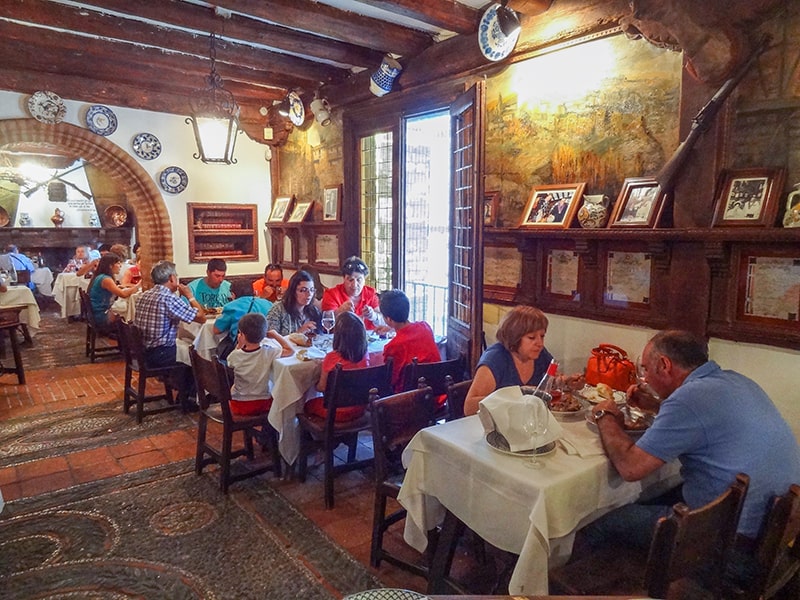
An Incredible Roman Aqueduct, A Delicious Spanish Lunch
After a few minutes, we reached an even larger square and saw the magnificent aqueduct looming over it, one of the most famous things to see in Segovia. I remember seeing the Roman aqueduct in Salamanca years ago, but it seemed dwarfed compared to the enormous 95-foot-high Segovian structure. Yet, surprisingly, despite its age, it still appeared in perfect condition.
Right alongside and below it was our restaurant, the 100+-year-old Candido. You couldn’t help but notice it occupied what appeared to be the prime piece of real estate in town.
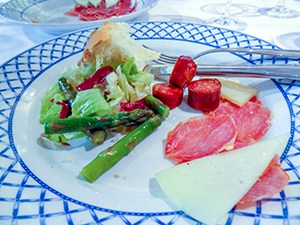
Candido, we quickly realized, is as famous for its suckling pig and lamb as it is for its ambiance. Its old plaster walls, beamed ceilings, and narrow, worn-stone stairway take you back a century or more, as it has for celebs including Hemingway, Nixon and only-God-Knows who else.
Although our waiter had told us that the suckling pig would actually be cut with a plate, we were all still surprised later when the pig was brought out. It was quickly followed by the restaurant owner, who then cut the pig into sections by driving down into it with a dinner plate. He then smashed the plate on the stone floor to the applause of everyone in the room.
The smashing of the plate was totally unexpected, and for a moment, I thought I was back in a taverna in old Athens. But once we stepped out the restaurant door and looked up at that incredible aqueduct overhead, there was no mistaking that the origins of all of this were Roman-inspired.
If you go:
Turismo de Segovia
http://www.turismodesegovia.com/
Mesón de Cándido
Plaza del Azoguejo 5
Segovia
Tel: 92-142-59-11
http://www.mesondecandido.es/

Hi Jim! very well writen article!
However, you did miss going up to top of the tower, the views are incredible.
So to stay down and “turn out to be the best option” is a bit unfair if you cannot compare climbing-up and not climbing-up, since you only did one 🙂
Really it is worth the view up there (apart from the stone staircase path which takes you there). I understand though being tired after the other walk. Maybe you can get also pics from somebody from your group who did go to the top.
Very nice article in any case!
Hi Luis,
I’m glad your enjoyed the article. During my next trip I’ll be sure to climb the Tower!
Hello Jim,
Good job. In 2016, we got a high-speed train to Segovia from Madrid taking 30 minutes. Are they not available anymore?
Hi Ravishanker,
You are absolutely correct. Thank you for bringing it to my attention. Yes, the high-speed train (I love them) takes 27 minutes from Madrid to Segovia with a fare of €14. It departs from Madrid’s Chamartin Station.
Jim